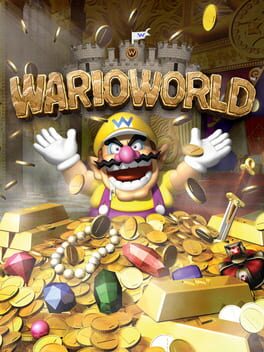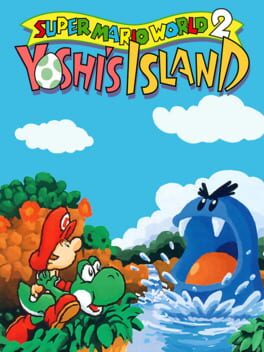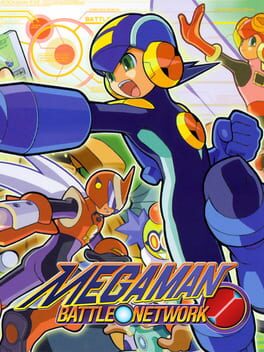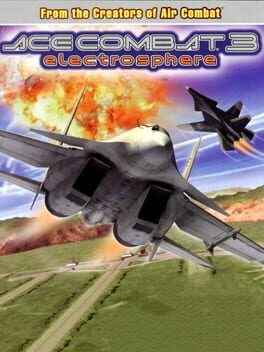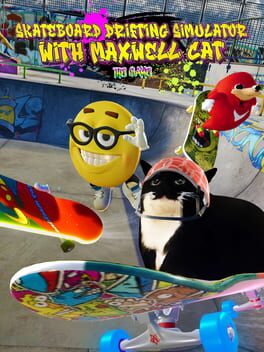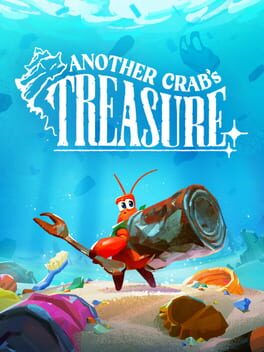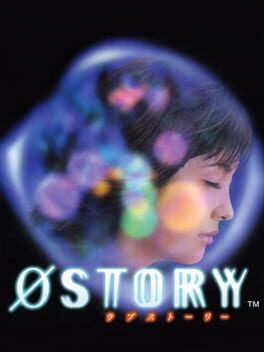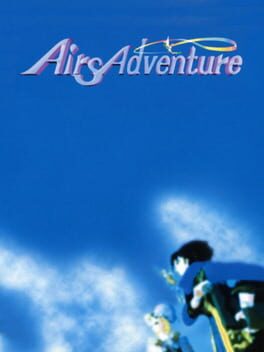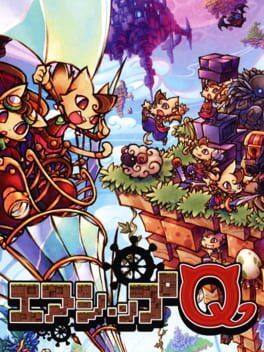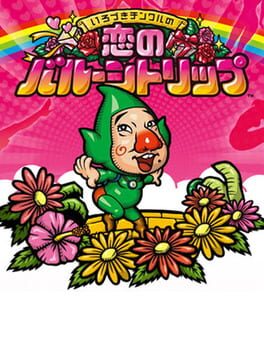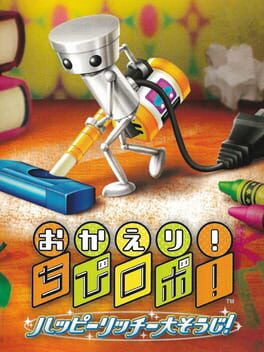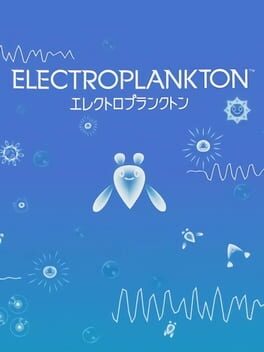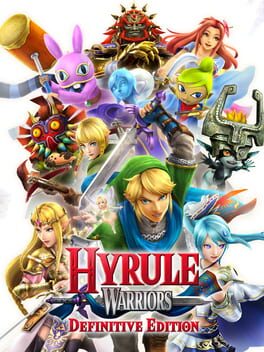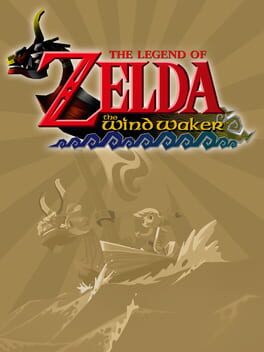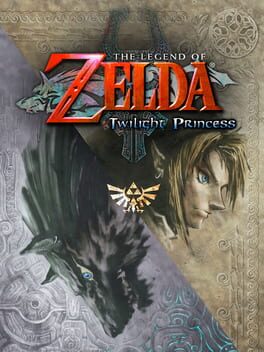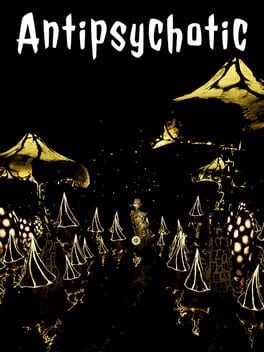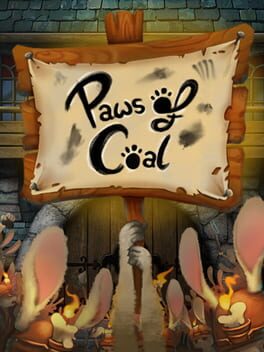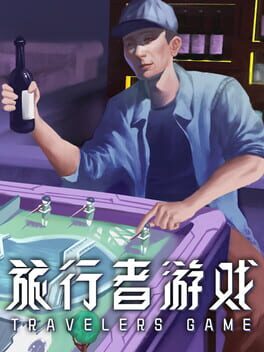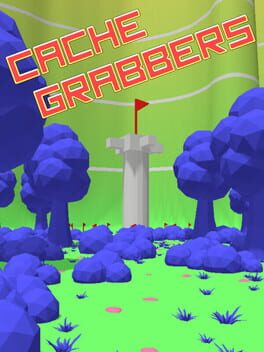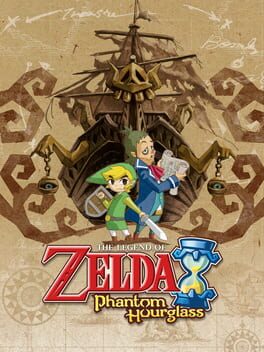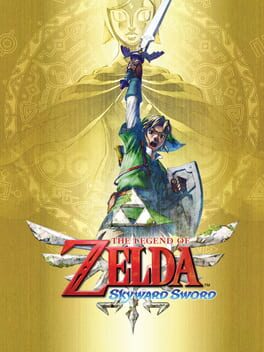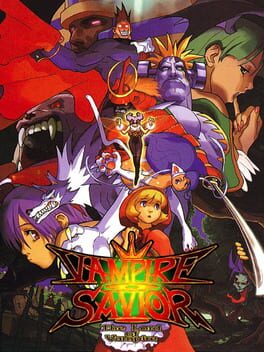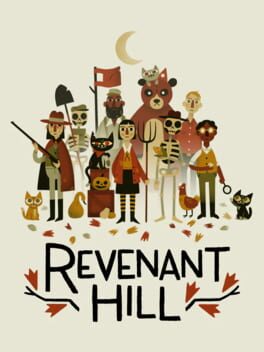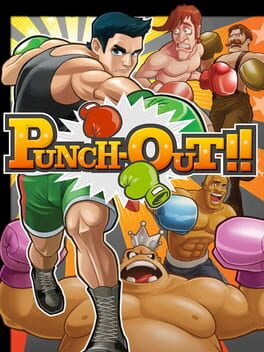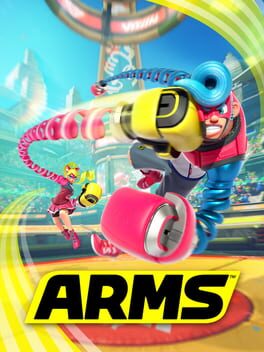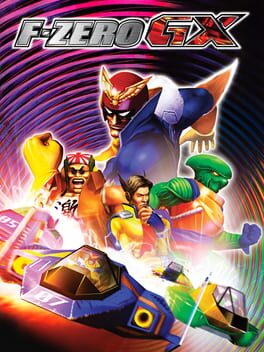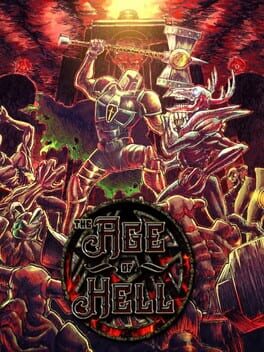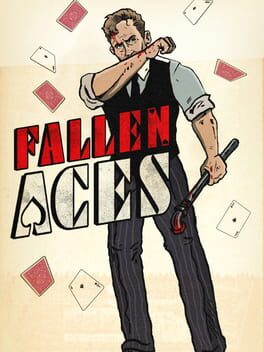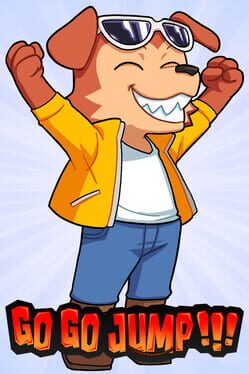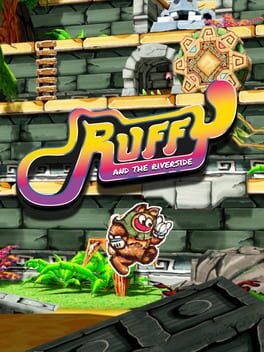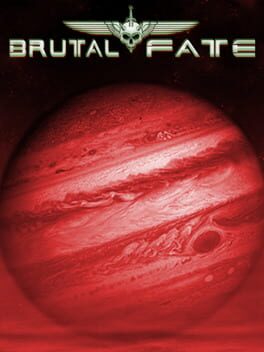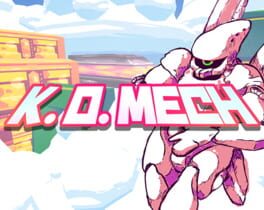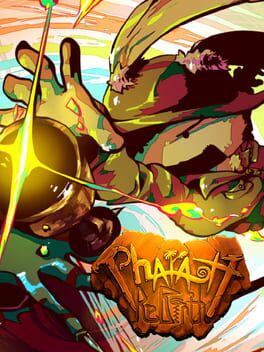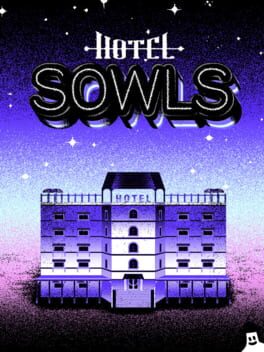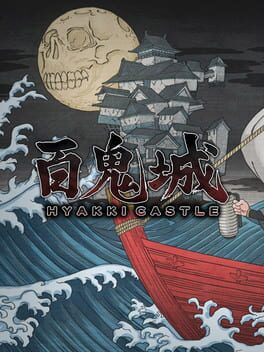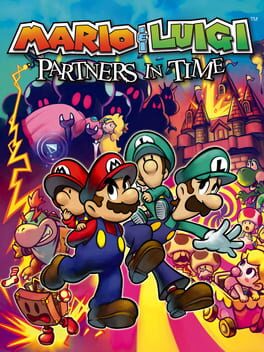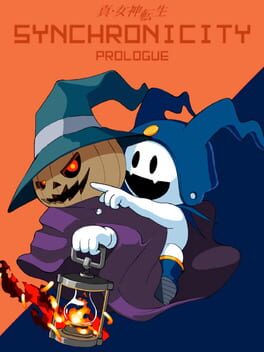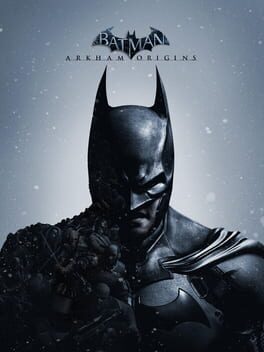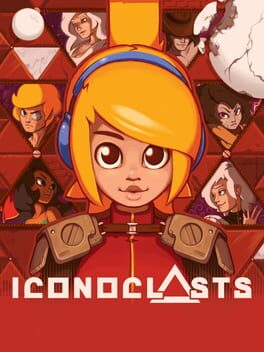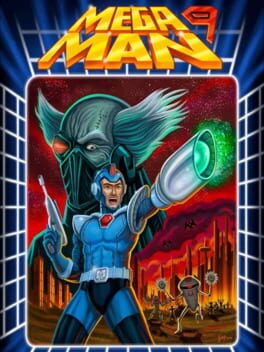DizzySkullKid19
469 reviews liked by DizzySkullKid19
Wario World
2003
This game feels like if they made a Mario Party 4 minigame a full game.
And I love Mario Party 4 so that's fine by me.
I had vague memories of play this game as a kid. I remember the circus level, pyramid level, and slopes level, and I remember having a really hard time with Red Brief J. I was pretty surprised to learn that I had almost beaten this game as a kid even though I only played it maybe once at my grandparents' house? Maybe it was more than once.
Anyhow, this game is pretty damn easy and not super interesting in either of its genres - 3D platformer and beat 'em up. The combat is super simple, enemies offer virtually no lethality the majority of the time, and frankly I just avoided them most of the time in the second half since they're just boring. The only way to die in this game is by getting hit enough times, falling into pits takes you to a zone where you have to break boxes to find an exit and any damage you take there will just take away money (money which you only use to buy health, yipee). The fun of this game is pretty much entirely in exploration and bosses. there are a whole bunch of collectibles in each level. Most of them are pretty easy to find, but there are challenge rooms that have you solve some kind of puzzle or complete a platforming challenge and they're the most fun part of the game. That said, they are also pretty easy most of the time. The very last level had some challenging ones (and one puzzle that I don't know how you're supposed to do, I just cheesed it a bit).
Every level has a unique boss, and each world ends in another unique boss - there's actually more bosses in this game than levels. Honestly, they don't take much to figure out how to beat, but I appreciate making each boss special, and there are some wicked designs here. A marionette cherub, a medusa with a blue stone-cold face, a bigass spider, etc. They're overall very interestingly designed, and most of them are fun to fight even if they aren't difficult. I'd say the final boss is actually the worst one since you just run around a circle and hit crystals for eight or so cycles and its attacks are predictable and easy, it was a disappointing end to the game. All in all, the designs in Wario World are cool.
This might be the best-animated 3D Wario to date, he's very expressive, and mixing that with his iconic voice lines makes this Wario actually decently stylized. The music is jamming, and the vibes are great. I definitely wouldn't call this a GameCube must-play, but it's still a good time, I don't think most people would regret playing it.
And I love Mario Party 4 so that's fine by me.
I had vague memories of play this game as a kid. I remember the circus level, pyramid level, and slopes level, and I remember having a really hard time with Red Brief J. I was pretty surprised to learn that I had almost beaten this game as a kid even though I only played it maybe once at my grandparents' house? Maybe it was more than once.
Anyhow, this game is pretty damn easy and not super interesting in either of its genres - 3D platformer and beat 'em up. The combat is super simple, enemies offer virtually no lethality the majority of the time, and frankly I just avoided them most of the time in the second half since they're just boring. The only way to die in this game is by getting hit enough times, falling into pits takes you to a zone where you have to break boxes to find an exit and any damage you take there will just take away money (money which you only use to buy health, yipee). The fun of this game is pretty much entirely in exploration and bosses. there are a whole bunch of collectibles in each level. Most of them are pretty easy to find, but there are challenge rooms that have you solve some kind of puzzle or complete a platforming challenge and they're the most fun part of the game. That said, they are also pretty easy most of the time. The very last level had some challenging ones (and one puzzle that I don't know how you're supposed to do, I just cheesed it a bit).
Every level has a unique boss, and each world ends in another unique boss - there's actually more bosses in this game than levels. Honestly, they don't take much to figure out how to beat, but I appreciate making each boss special, and there are some wicked designs here. A marionette cherub, a medusa with a blue stone-cold face, a bigass spider, etc. They're overall very interestingly designed, and most of them are fun to fight even if they aren't difficult. I'd say the final boss is actually the worst one since you just run around a circle and hit crystals for eight or so cycles and its attacks are predictable and easy, it was a disappointing end to the game. All in all, the designs in Wario World are cool.
This might be the best-animated 3D Wario to date, he's very expressive, and mixing that with his iconic voice lines makes this Wario actually decently stylized. The music is jamming, and the vibes are great. I definitely wouldn't call this a GameCube must-play, but it's still a good time, I don't think most people would regret playing it.
Pikmin
2001
The secret behind Pikmin’s success was not that it somehow outclassed classic real-time strategy franchises, but rather that it was never competing with them to begin with. According to Shigeru Miyamoto, he came up with the idea for Pikmin one day when he observed a group of ants carrying leaves together into their nest. Miyamoto then imagined a game focused on cooperation rather than competition; he asked, “Why can’t everyone just move together in the same direction, carrying things as a team?” Nintendo EAD’s design philosophy went along with this line of reasoning, melding design mechanics from different genres to create an entirely new yet familiar experience. As a result, instead of competing against other players in Pikmin akin to classic RTS games, Pikmin forces players to explore and compete with the very environment itself by introducing puzzle-exploration and survival mechanics. It made sense in the end; after all, real-time strategy is concerned with minimizing time spent to get a competitive edge over opponents, and what better way to translate this than to force players to master their understanding over the terrain itself, managing and optimizing the one resource which governs them all?
Perhaps Nintendo’s greatest challenge was figuring out how to translate a genre considered by many to be niche and technical to an intuitive yet layered game, and even more so, translating classic actions from a mouse and keyboard allowing for such complexity to a suite of simplified controls using a gamepad. Coming from the other side as someone who played Starcraft as a kid and didn’t get into Pikmin until recently however, I’m surprised at how well EAD’s tackled this endeavor. Classic RTS games focus upon base-building and resource gathering through the micromanagement of units. Pikmin’s take upon this is to introduce a dichotomy between the player character Captain Olimar, who is incapable of doing anything by himself but can issue commands to the units only he can create by plucking out of the soil, and the Pikmin, who are essentially brainless but represent the units that must do everything. The player as Olimar must be present to figure out exactly how to best traverse and exploit the environment around him (replacing the base-building with management/prioritization puzzles) while the Pikmin provide bodies to construct, move, and attack the world around them. However, the Pikmin’s AI is fairly limited and as a result, Pikmin will sit around helplessly once they finish their actions and often get distracted by nearby objects while moving around, which is where the micromanagement kicks in. Therefore, the player has to decide how to best build up their supply of Pikmin to allocate tasks to surmount bottlenecks while exploring and opening the world, all while working against the limited thirty-day timer throughout the game’s five areas.
A part of me expected to really struggle with the gamepad while playing Pikmin, but the available actions on offer allow for a surprising degree of control despite the simplification. For instance, consider Olimar’s whistle; as a substitution for dragging and clicking to select units on PC, the whistle on the GameCube lets Olimar quickly rally groups of clustered units. Holding down B for longer allows the player to increase the size of the whistle’s AOE, which allows the player to better control and target how many Pikmin to rally in any cluster (hence, the analog of clicking and dragging to select boxes of units on mouse and keyboard). The Swarm command is another interesting translation. The obvious use is to allow Olimar to quickly move nearby Pikmin by directing them with the C-stick versus needing to aim and throw them by positioning and rotating Olimar himself. However, because it can be used to shift the position of Pikmin with respect to Olimar, it can also be used to swap the Pikmin on-deck for throwing (since Olimar will always throw the Pikmin closest to him) without needing to dismiss and re-rally separated Pikmin colors, and most importantly, it allows you to directly control the group of Pikmin following Olimar while moving Olimar himself. This second application allows the player to kite the Pikmin around telegraphed enemy attacks, and properly funnel them so the Pikmin aren’t getting as easily stuck behind walls or falling off ledges/bridges into hazards. That said, noticeable control limitations do exist. Olimar cannot pivot to move the reticle without changing his position with respect to the Pikmin around him, which can make aiming in place annoying if the Pikmin types you need to throw aren’t close enough to be moved next to Olimar with Swarm. Additionally, there is no way for Olimar to simultaneously and directly control multiple separated groups of Pikmin, which does make allocating tasks a bit slower. However, given that the tasks themselves usually don’t necessitate more than one Pikmin type at a time, this limitation is understandable, especially since the sequels would tackle this challenge with more expansive controls and multiple playable characters on the field.
Pikmin’s base model as a result is a fantastic translation of an abstract design philosophy, but I can’t help but wonder if the original could have been pushed further. Don’t misunderstand me: I absolutely take pride in mastering a game by learning all about its inner workings and pushing its mechanics to the limits simply by following a few intuitive genre principles. As such, I wish that the game was a bit harder in order to really force me to squeeze every bit of time from the game’s solid premise. For example, combat is often optional in Pikmin given how many full-grown Bulborbs are found sleeping, but given that most enemies don’t respawn within the next day after killing them and I can bring their carcasses back to base to more than replenish my Pikmin supply, combat is almost always in my favor, especially since certain enemies will spawn more mobs if they aren’t defeated. If circumstances existed where it would be unfavorable to engage (such as losing a significant number of Pikmin every time, or having so little time left that engaging would waste time), then I feel that this would add an additional layer of decision-making of deciding when to sneak past sleeping Bulborbs rather than just wiping out as many foes as I could as soon as possible. In a similar sense, I felt that certain design elements such as the Candypop Buds for switching Pikmin colors were a bit underutilized; outside of one environmental puzzle, I never had to use the Candypop Buds, mainly because I had so many remaining Pikmin and time to never justify their usage. I’ll concede here that Pikmin’s one-day Challenge Mode does at least provide a score attack sandbox where I’m forced to take my Pikmin stock and remaining time into higher consideration, but it’s missing the connectivity of the main story mode where my earlier actions would greatly affect how I planned later days in a run, particularly in making judgement calls on which days to spend at each site and which days I dedicate towards building up my Pikmin numbers versus hauling in ship parts. Regardless, I found myself completing the main game with all parts in just twenty days on my first run with minimal resets, and I’d love to try a harder difficulty mode with a stricter time limit and tougher Pikmin margins to really force me to better conserve my working force and dedicate more time to restocking my supply.
Gripes aside, I’m glad that my friends finally convinced me to try out Pikmin, not just to better appreciate RTS games as a whole but to also gain an appreciation of how different genre mechanics can work in tandem to intuitively convey concepts without spelling everything out to the player. It’s classic Nintendo at their core, and while I had my reservations coming in as a fan of older RTS franchises, they’ve managed to convince me once again that the best hook is not simply offering something that’s visibly better, but rather offering something that’s visibly different. I still think that there’s improvement to be had, but given how much I’ve enjoyed the first game, I can’t wait to see what they have to offer from iterating upon their memorable beginnings.
Perhaps Nintendo’s greatest challenge was figuring out how to translate a genre considered by many to be niche and technical to an intuitive yet layered game, and even more so, translating classic actions from a mouse and keyboard allowing for such complexity to a suite of simplified controls using a gamepad. Coming from the other side as someone who played Starcraft as a kid and didn’t get into Pikmin until recently however, I’m surprised at how well EAD’s tackled this endeavor. Classic RTS games focus upon base-building and resource gathering through the micromanagement of units. Pikmin’s take upon this is to introduce a dichotomy between the player character Captain Olimar, who is incapable of doing anything by himself but can issue commands to the units only he can create by plucking out of the soil, and the Pikmin, who are essentially brainless but represent the units that must do everything. The player as Olimar must be present to figure out exactly how to best traverse and exploit the environment around him (replacing the base-building with management/prioritization puzzles) while the Pikmin provide bodies to construct, move, and attack the world around them. However, the Pikmin’s AI is fairly limited and as a result, Pikmin will sit around helplessly once they finish their actions and often get distracted by nearby objects while moving around, which is where the micromanagement kicks in. Therefore, the player has to decide how to best build up their supply of Pikmin to allocate tasks to surmount bottlenecks while exploring and opening the world, all while working against the limited thirty-day timer throughout the game’s five areas.
A part of me expected to really struggle with the gamepad while playing Pikmin, but the available actions on offer allow for a surprising degree of control despite the simplification. For instance, consider Olimar’s whistle; as a substitution for dragging and clicking to select units on PC, the whistle on the GameCube lets Olimar quickly rally groups of clustered units. Holding down B for longer allows the player to increase the size of the whistle’s AOE, which allows the player to better control and target how many Pikmin to rally in any cluster (hence, the analog of clicking and dragging to select boxes of units on mouse and keyboard). The Swarm command is another interesting translation. The obvious use is to allow Olimar to quickly move nearby Pikmin by directing them with the C-stick versus needing to aim and throw them by positioning and rotating Olimar himself. However, because it can be used to shift the position of Pikmin with respect to Olimar, it can also be used to swap the Pikmin on-deck for throwing (since Olimar will always throw the Pikmin closest to him) without needing to dismiss and re-rally separated Pikmin colors, and most importantly, it allows you to directly control the group of Pikmin following Olimar while moving Olimar himself. This second application allows the player to kite the Pikmin around telegraphed enemy attacks, and properly funnel them so the Pikmin aren’t getting as easily stuck behind walls or falling off ledges/bridges into hazards. That said, noticeable control limitations do exist. Olimar cannot pivot to move the reticle without changing his position with respect to the Pikmin around him, which can make aiming in place annoying if the Pikmin types you need to throw aren’t close enough to be moved next to Olimar with Swarm. Additionally, there is no way for Olimar to simultaneously and directly control multiple separated groups of Pikmin, which does make allocating tasks a bit slower. However, given that the tasks themselves usually don’t necessitate more than one Pikmin type at a time, this limitation is understandable, especially since the sequels would tackle this challenge with more expansive controls and multiple playable characters on the field.
Pikmin’s base model as a result is a fantastic translation of an abstract design philosophy, but I can’t help but wonder if the original could have been pushed further. Don’t misunderstand me: I absolutely take pride in mastering a game by learning all about its inner workings and pushing its mechanics to the limits simply by following a few intuitive genre principles. As such, I wish that the game was a bit harder in order to really force me to squeeze every bit of time from the game’s solid premise. For example, combat is often optional in Pikmin given how many full-grown Bulborbs are found sleeping, but given that most enemies don’t respawn within the next day after killing them and I can bring their carcasses back to base to more than replenish my Pikmin supply, combat is almost always in my favor, especially since certain enemies will spawn more mobs if they aren’t defeated. If circumstances existed where it would be unfavorable to engage (such as losing a significant number of Pikmin every time, or having so little time left that engaging would waste time), then I feel that this would add an additional layer of decision-making of deciding when to sneak past sleeping Bulborbs rather than just wiping out as many foes as I could as soon as possible. In a similar sense, I felt that certain design elements such as the Candypop Buds for switching Pikmin colors were a bit underutilized; outside of one environmental puzzle, I never had to use the Candypop Buds, mainly because I had so many remaining Pikmin and time to never justify their usage. I’ll concede here that Pikmin’s one-day Challenge Mode does at least provide a score attack sandbox where I’m forced to take my Pikmin stock and remaining time into higher consideration, but it’s missing the connectivity of the main story mode where my earlier actions would greatly affect how I planned later days in a run, particularly in making judgement calls on which days to spend at each site and which days I dedicate towards building up my Pikmin numbers versus hauling in ship parts. Regardless, I found myself completing the main game with all parts in just twenty days on my first run with minimal resets, and I’d love to try a harder difficulty mode with a stricter time limit and tougher Pikmin margins to really force me to better conserve my working force and dedicate more time to restocking my supply.
Gripes aside, I’m glad that my friends finally convinced me to try out Pikmin, not just to better appreciate RTS games as a whole but to also gain an appreciation of how different genre mechanics can work in tandem to intuitively convey concepts without spelling everything out to the player. It’s classic Nintendo at their core, and while I had my reservations coming in as a fan of older RTS franchises, they’ve managed to convince me once again that the best hook is not simply offering something that’s visibly better, but rather offering something that’s visibly different. I still think that there’s improvement to be had, but given how much I’ve enjoyed the first game, I can’t wait to see what they have to offer from iterating upon their memorable beginnings.
Every journey has a beginning. Whether it be a monumental journey that tells of some great hero setting out to accomplish some goal or to defeat a big bad guy, or rather it be something as simple as how one decided to go to the post office that day, there is always a beginning to every story, and that definitely rings true when it comes to video games. Some of us may have played thousands of games at this point in our lives, while others are merely starting to get into the hobby, but one thing that remains consistent between all of us is that we all had a first video game, the one that would introduce us to this vast, creative and limitless medium, one that either fully enraptured us to the point of seeking out what else you could find, or leaving a simple, yet enjoyable enough impression to where you wouldn’t mind trying anything else out in the future. So, I figured, for the 600th review that I am making on this website (I might be slightly insane), I figured it was about time that I covered the very first video game I ever played in my life, Super Mario World 2: Yoshi’s Island.
I don’t remember the exact, precise details of how I ended up with this as the first game I would ever play, but I do have a bit of a brief summary based on what I do remember, which will do a good enough job at painting a picture. Back in 2003-2004, when I was around 3-4 years old as well, I was a dumbass little kid, not knowing what a video game even was, and most likely doing the things that most toddlers were doing back then, such as running around, yelling, eating weird stuff off the floor, and receiving plenty of injuries. One day, my Mom and Dad came home one day with a little present for me, which just so happened to be a gray Game Boy Advance SP, one that I still own even to this day, and one that I share a lot of fond memories with throughout my life. With this, I also managed to get two games, those being Pokemon Blue and Super Mario Advance 3: Yoshi’s Island, and with all of these things in hand, I had… absolutely zero clue as to what I was supposed to do with it. After messing around with the things for a bit, most likely opening and closing them, chewing on the sides of them, and so on, I then found out I can shove that weird gray rectangle thing into the big gray brick, while also finding a power switch on the system, leading to it turning on, and from that moment on, I was never the same.
So yeah, obviously, I have a lot of nostalgia towards this game, and while those early experiences were with the GBA port of the game rather than the original, it was still pretty accurate to that of the original game, to the point where I fondly remember several memories of me playing it as a kid, including one instance where I got so angry when I lost to the second phase of the Baby Bowser fight. It was my first instance of rage… you love to see it. But anyways, you all obviously didn’t come here to listen to me babble on about the past. You all came here to hear my opinion of this game, and if you couldn’t tell already at this point, I do still hold a soft place for it in my heart, and I love it tremendously. I can’t say it is perfect by any means,as it does have problems I will get into, but it was still fantastic all the way through, not only as one of the first proper Yoshi games ever made that wasn’t a puzzle game or whatever else, but also as the game that would drag me into the world of video games as a whole.
The story is very simple, yet very charming at the same time, where one night, while a stork is delivering two baby brothers by the name of Mario and Luigi to their parents, he is attacked by an evil sorcerer named Kamek, who kidnaps Baby Luigi and causes Baby Mario to fall down into the depths of the island below. Down on said island, a green Yoshi is taking a nice, leisurely stroll, until he then finds Baby Mario falling right on his back, while also dropping the map that the stork was using to deliver the kids. After gathering with several other Yoshis on the island, they then deduce (somehow) what happened to Baby Luigi, so they all then set out, with Baby Mario alongside them, to go and rescue Baby Luigi from Kamek’s evil clutches, while he and his lackeys plot to take Baby Mario as well to succeed in their ultimate goal. It is somewhat of an odd story, considering how it de-ages the Mario bros. and shifts the focus onto the Yoshis, but it is one that you can easily get behind and want to see through, as you don’t wanna see Baby Luigi get hurt by Kamek……… he can hurt Baby Mario instead, considering how much you have to put up with him in this game.
The graphics are still absolutely amazing even to this day, being one of the best looking games from the SNES library, let alone the best looking platformer on the system, having a very unique art style and plenty of vibrant colors, wonderful character, enemy, and boss designs, as well as plenty of vibrant environments that you will travel through for your whole journey, the music is fantastic, having incredibly up-beat and iconic tunes like this one that will play throughout the game, mixed in with some more “menacing” tunes like this one, most of them being a joy to listen to even after all this time, and the gameplay/control is mostly stuff that we have seen before from the Mario franchise, but not only does it remain really fun to play, but there are several different gimmicks that are present in the game that you wouldn’t typically find in other games.
The game is a 2D platformer, where you take control of one of many different colored Yoshis at a time, go through plenty different levels across many different standout locations amongst Yoshi’s Island, take out plenty of enemies either by jumping on them, swallowing them whole, or throwing others’ dead remains at them to drive the point home, protect Baby Mario at all times to not only prevent Kamek’s cronies from taking him, but also to make sure you won’t be listening to this sound for too long, gather plenty of different eggs to help you defend yourself, solve puzzles, and take down foes, while also gathering plenty of collectibles along the way, and take on some goofy, yet at-times threatening bosses, which range from being big, intimidating foes that can definitely give you a run for your money to……. this guy, who you defeat by just simply holding right…….. fucking flawless. Much of it is your standard platforming affair, even for those who are very familiar with Mario and his past adventures, but rest assured, despite the fact that it carries the name “Super Mario World” in its title, Yoshi’s Island manages to have plenty of unique elements that distinguish itself from Mario quite a bit, both in terms of its presentation and gameplay.
A lot of elements in this game have been done to death over and over again in many other games, such as going from left to right to the end of the level, defeating enemies, getting coins, and so on, but one of the ways that makes this feel much different than that of a typical Mario game is how you are playing as Yoshi the entire time. Naturally, he does not go about his business the same way Mario does, being able to swallow enemies and throw them around as eggs, and as such, this changes up how the game expects you to approach many situations, and it is great because of it. There are many instances in this game that can’t be cleared through just by running and jumping, but instead, you may need to figure out a different way to defeat an enemy or solve a puzzle using your flutter jump or your eggs, and while some of it can get tedious at times, most of it is incredibly solid, still feeling natural and just as fun even after all of these years.
Not to mention, there are plenty of things that this game has that expands upon elements seen in previous Mario games, all to its benefit. There are many different bonus games that can be accessed throughout the game, each granting you the chance of getting a GARGANTUAN amount of lives to use for the future, right alongside several items as well, which you can use at any time while in a level. Most of these items aren’t really all that useful, just being a means of helping you get to 100%, and the bonus games themselves aren’t anything too useful after beating them once or twice, but they can still be pretty helpful whenever you get the chance to participate in any of them, and in some instances, they can definitely get you out of a bind that you are in. Aside from that though, there are also the powerups in this game, which, rather than being the traditional ones we see all the time in typical Mario games, are instead a bunch of different transformations that Yoshi can take on for a brief period of time. You can become a helicopter, a submarine, a robot mole, and there’s even a powerup that allows you to play as Baby Mario by himself, running around and going up walls, because who gives a fuck about logic! Granted, not all of these powerups are fun to use, with some like that robot mole I mentioned earlier having some pretty awkward handling at times, but they are a nice change of pace whenever they pop up, and it is always really neat seeing just what kinds of things that they are willing to transform Yoshi into next.
So yeah, the game does have a lot going for it in the gameplay department, being very fun even all the way to now, but a lot of the reason why this game does hold up also has something to do with its presentation. The game was made with the Super FX chip, one that was able to do a whole lot more then what games like Star Fox could, and when you play the game for yourself, you can really see it working perfectly in harmony. Sprites will frequently change sizes to fit the situations, enemies will jump from the background to the foreground, there are 3D objects that can be interacted with, and the way that some enemies and sprites move around looks much more impressive then any other game from the SNES at that point. Hell, even just by watching the intro sequence, you can see just what kind of stuff this game was capable of, and while it does look a little rough nowadays, I can imagine this kind of thing blowing peoples’ minds back in the day, and it has aged pretty wonderfully overtime. Not to mention, the general art style of the game is perfect in every way, making everything look so vibrant, lively, and adorable, to the point where I want to live on this island and never come back to civilization.
However, with all of that out of the way, I can’t let my nostalgia goggles blind me for too long, because I am well aware that this game is not perfect, despite it being very, VERY close to that point. While most of the game is extremely fun to play, great to look at/listen to, and has plenty of charming elements that makes it a must-play for any Nintendo fan, there has always been one element of the game that I never really liked, and that is going for 100%. For those that aren’t aware, in order to 100% Yoshi’s Island, you have to collect plenty of items in every single level, such as 30 stars to max out your life, all of the red coins, and the five smiley flowers for the chance at a bonus game at the end of the level. That doesn’t sound that bad, but trust me, completing these tasks is MUCH easier said than done, not only because of how hard it can be in plenty of places, but also because of how tedious it is. Getting a lot of these collectibles can be quite a gamble, especially in plenty of areas where you have to have perfect precision when it comes to throwing your eggs, or even in life-or-death situations where you can’t screw up, or else you would have to die or start the level over again.
That’s not even bringing up the fact that, once you do 100% the main levels in a world, you then unlock an extra stage to play for that world, and these stages can be quite the pain in the dino-ass if you aren’t prepared for them. This can be seen even as early as the first world’s extra stage, where for most of the stage, you are riding along the back of Poochy, Yoshi’s dog companion who is also be goodest good boy of them all, while going across a lot of precarious lava and tight jumps, while also having a very small platform to go back to every time you land. All of this and more awaits you when you decide to go for 100%, and while I myself usually tend to 100% the games that I play, I just simply don’t like doing that with Yoshi games. I dunno, maybe it’s because of how it was a series I grew up with, and is near and dear to my heart, but I have always found this games to be a “chill” series, one that I could just play, run straight through a lot of the time, not having to worry about much else, and I don’t think I will ever change my mind on that stance. To be fair though, I am not saying that going for 100% in this game is a bad thing at all, because it is still perfectly doable, and quite the challenge, if you so wish to go for it, but it is just something I don’t think I will ever be likely to do that much whenever I go back to one of these games. Not to mention, the last time I did 100% percent a Yoshi game was with Crafted World, and, ah hah……………… NEVER AGAIN.
Overall, despite me not really getting into the whole idea of 100% this game at many given times, I am eternally grateful that this managed to be the first video game I ever played in my life, as not only is it a wonderful place to start for anybody, but it is also a fantastic game in many ways, having a wonderful art style, fantastic music, addicting and satisfying gameplay, and a sense of identity that the series would carry on its shoulders all the way to this day, which is all for the best in my opinion. I would definitely recommend it for those who have never played any Yoshi game before, as well as those who are just big fans of Yoshi in general, because if you somehow haven’t gotten the chance to play this for yourself, then you are clearly missing out, because it truly is one of the finest platformers from the 16-bit era. happy sigh..... man, it feels great to finally get to this game, after I had been planning it for so long. Although, now that I am done with all my gushing, I don’t have any funny gag to end the review on. Uh… obligatory Touch Fuzzy, Get Dizzy reference. There ya go, is that good enough? Have I won the Yoshi’s Island internet prize, and will people like me now?
Game #578
I don’t remember the exact, precise details of how I ended up with this as the first game I would ever play, but I do have a bit of a brief summary based on what I do remember, which will do a good enough job at painting a picture. Back in 2003-2004, when I was around 3-4 years old as well, I was a dumbass little kid, not knowing what a video game even was, and most likely doing the things that most toddlers were doing back then, such as running around, yelling, eating weird stuff off the floor, and receiving plenty of injuries. One day, my Mom and Dad came home one day with a little present for me, which just so happened to be a gray Game Boy Advance SP, one that I still own even to this day, and one that I share a lot of fond memories with throughout my life. With this, I also managed to get two games, those being Pokemon Blue and Super Mario Advance 3: Yoshi’s Island, and with all of these things in hand, I had… absolutely zero clue as to what I was supposed to do with it. After messing around with the things for a bit, most likely opening and closing them, chewing on the sides of them, and so on, I then found out I can shove that weird gray rectangle thing into the big gray brick, while also finding a power switch on the system, leading to it turning on, and from that moment on, I was never the same.
So yeah, obviously, I have a lot of nostalgia towards this game, and while those early experiences were with the GBA port of the game rather than the original, it was still pretty accurate to that of the original game, to the point where I fondly remember several memories of me playing it as a kid, including one instance where I got so angry when I lost to the second phase of the Baby Bowser fight. It was my first instance of rage… you love to see it. But anyways, you all obviously didn’t come here to listen to me babble on about the past. You all came here to hear my opinion of this game, and if you couldn’t tell already at this point, I do still hold a soft place for it in my heart, and I love it tremendously. I can’t say it is perfect by any means,as it does have problems I will get into, but it was still fantastic all the way through, not only as one of the first proper Yoshi games ever made that wasn’t a puzzle game or whatever else, but also as the game that would drag me into the world of video games as a whole.
The story is very simple, yet very charming at the same time, where one night, while a stork is delivering two baby brothers by the name of Mario and Luigi to their parents, he is attacked by an evil sorcerer named Kamek, who kidnaps Baby Luigi and causes Baby Mario to fall down into the depths of the island below. Down on said island, a green Yoshi is taking a nice, leisurely stroll, until he then finds Baby Mario falling right on his back, while also dropping the map that the stork was using to deliver the kids. After gathering with several other Yoshis on the island, they then deduce (somehow) what happened to Baby Luigi, so they all then set out, with Baby Mario alongside them, to go and rescue Baby Luigi from Kamek’s evil clutches, while he and his lackeys plot to take Baby Mario as well to succeed in their ultimate goal. It is somewhat of an odd story, considering how it de-ages the Mario bros. and shifts the focus onto the Yoshis, but it is one that you can easily get behind and want to see through, as you don’t wanna see Baby Luigi get hurt by Kamek……… he can hurt Baby Mario instead, considering how much you have to put up with him in this game.
The graphics are still absolutely amazing even to this day, being one of the best looking games from the SNES library, let alone the best looking platformer on the system, having a very unique art style and plenty of vibrant colors, wonderful character, enemy, and boss designs, as well as plenty of vibrant environments that you will travel through for your whole journey, the music is fantastic, having incredibly up-beat and iconic tunes like this one that will play throughout the game, mixed in with some more “menacing” tunes like this one, most of them being a joy to listen to even after all this time, and the gameplay/control is mostly stuff that we have seen before from the Mario franchise, but not only does it remain really fun to play, but there are several different gimmicks that are present in the game that you wouldn’t typically find in other games.
The game is a 2D platformer, where you take control of one of many different colored Yoshis at a time, go through plenty different levels across many different standout locations amongst Yoshi’s Island, take out plenty of enemies either by jumping on them, swallowing them whole, or throwing others’ dead remains at them to drive the point home, protect Baby Mario at all times to not only prevent Kamek’s cronies from taking him, but also to make sure you won’t be listening to this sound for too long, gather plenty of different eggs to help you defend yourself, solve puzzles, and take down foes, while also gathering plenty of collectibles along the way, and take on some goofy, yet at-times threatening bosses, which range from being big, intimidating foes that can definitely give you a run for your money to……. this guy, who you defeat by just simply holding right…….. fucking flawless. Much of it is your standard platforming affair, even for those who are very familiar with Mario and his past adventures, but rest assured, despite the fact that it carries the name “Super Mario World” in its title, Yoshi’s Island manages to have plenty of unique elements that distinguish itself from Mario quite a bit, both in terms of its presentation and gameplay.
A lot of elements in this game have been done to death over and over again in many other games, such as going from left to right to the end of the level, defeating enemies, getting coins, and so on, but one of the ways that makes this feel much different than that of a typical Mario game is how you are playing as Yoshi the entire time. Naturally, he does not go about his business the same way Mario does, being able to swallow enemies and throw them around as eggs, and as such, this changes up how the game expects you to approach many situations, and it is great because of it. There are many instances in this game that can’t be cleared through just by running and jumping, but instead, you may need to figure out a different way to defeat an enemy or solve a puzzle using your flutter jump or your eggs, and while some of it can get tedious at times, most of it is incredibly solid, still feeling natural and just as fun even after all of these years.
Not to mention, there are plenty of things that this game has that expands upon elements seen in previous Mario games, all to its benefit. There are many different bonus games that can be accessed throughout the game, each granting you the chance of getting a GARGANTUAN amount of lives to use for the future, right alongside several items as well, which you can use at any time while in a level. Most of these items aren’t really all that useful, just being a means of helping you get to 100%, and the bonus games themselves aren’t anything too useful after beating them once or twice, but they can still be pretty helpful whenever you get the chance to participate in any of them, and in some instances, they can definitely get you out of a bind that you are in. Aside from that though, there are also the powerups in this game, which, rather than being the traditional ones we see all the time in typical Mario games, are instead a bunch of different transformations that Yoshi can take on for a brief period of time. You can become a helicopter, a submarine, a robot mole, and there’s even a powerup that allows you to play as Baby Mario by himself, running around and going up walls, because who gives a fuck about logic! Granted, not all of these powerups are fun to use, with some like that robot mole I mentioned earlier having some pretty awkward handling at times, but they are a nice change of pace whenever they pop up, and it is always really neat seeing just what kinds of things that they are willing to transform Yoshi into next.
So yeah, the game does have a lot going for it in the gameplay department, being very fun even all the way to now, but a lot of the reason why this game does hold up also has something to do with its presentation. The game was made with the Super FX chip, one that was able to do a whole lot more then what games like Star Fox could, and when you play the game for yourself, you can really see it working perfectly in harmony. Sprites will frequently change sizes to fit the situations, enemies will jump from the background to the foreground, there are 3D objects that can be interacted with, and the way that some enemies and sprites move around looks much more impressive then any other game from the SNES at that point. Hell, even just by watching the intro sequence, you can see just what kind of stuff this game was capable of, and while it does look a little rough nowadays, I can imagine this kind of thing blowing peoples’ minds back in the day, and it has aged pretty wonderfully overtime. Not to mention, the general art style of the game is perfect in every way, making everything look so vibrant, lively, and adorable, to the point where I want to live on this island and never come back to civilization.
However, with all of that out of the way, I can’t let my nostalgia goggles blind me for too long, because I am well aware that this game is not perfect, despite it being very, VERY close to that point. While most of the game is extremely fun to play, great to look at/listen to, and has plenty of charming elements that makes it a must-play for any Nintendo fan, there has always been one element of the game that I never really liked, and that is going for 100%. For those that aren’t aware, in order to 100% Yoshi’s Island, you have to collect plenty of items in every single level, such as 30 stars to max out your life, all of the red coins, and the five smiley flowers for the chance at a bonus game at the end of the level. That doesn’t sound that bad, but trust me, completing these tasks is MUCH easier said than done, not only because of how hard it can be in plenty of places, but also because of how tedious it is. Getting a lot of these collectibles can be quite a gamble, especially in plenty of areas where you have to have perfect precision when it comes to throwing your eggs, or even in life-or-death situations where you can’t screw up, or else you would have to die or start the level over again.
That’s not even bringing up the fact that, once you do 100% the main levels in a world, you then unlock an extra stage to play for that world, and these stages can be quite the pain in the dino-ass if you aren’t prepared for them. This can be seen even as early as the first world’s extra stage, where for most of the stage, you are riding along the back of Poochy, Yoshi’s dog companion who is also be goodest good boy of them all, while going across a lot of precarious lava and tight jumps, while also having a very small platform to go back to every time you land. All of this and more awaits you when you decide to go for 100%, and while I myself usually tend to 100% the games that I play, I just simply don’t like doing that with Yoshi games. I dunno, maybe it’s because of how it was a series I grew up with, and is near and dear to my heart, but I have always found this games to be a “chill” series, one that I could just play, run straight through a lot of the time, not having to worry about much else, and I don’t think I will ever change my mind on that stance. To be fair though, I am not saying that going for 100% in this game is a bad thing at all, because it is still perfectly doable, and quite the challenge, if you so wish to go for it, but it is just something I don’t think I will ever be likely to do that much whenever I go back to one of these games. Not to mention, the last time I did 100% percent a Yoshi game was with Crafted World, and, ah hah……………… NEVER AGAIN.
Overall, despite me not really getting into the whole idea of 100% this game at many given times, I am eternally grateful that this managed to be the first video game I ever played in my life, as not only is it a wonderful place to start for anybody, but it is also a fantastic game in many ways, having a wonderful art style, fantastic music, addicting and satisfying gameplay, and a sense of identity that the series would carry on its shoulders all the way to this day, which is all for the best in my opinion. I would definitely recommend it for those who have never played any Yoshi game before, as well as those who are just big fans of Yoshi in general, because if you somehow haven’t gotten the chance to play this for yourself, then you are clearly missing out, because it truly is one of the finest platformers from the 16-bit era. happy sigh..... man, it feels great to finally get to this game, after I had been planning it for so long. Although, now that I am done with all my gushing, I don’t have any funny gag to end the review on. Uh… obligatory Touch Fuzzy, Get Dizzy reference. There ya go, is that good enough? Have I won the Yoshi’s Island internet prize, and will people like me now?
Game #578
Mega Man Battle Network offers a refreshingly unique twist on the classic franchise. Instead of traditional platforming action, the focus shifts to tactical deck-building and real-time grid-based combat. The charming pixel art, catchy soundtrack, and engaging storyline set within the internet provide a compelling experience for RPG enthusiasts. However, new players may find the learning curve a bit steep initially.
" Alright we're in charge of localizing this, what's the story like again? "
" The world in the near future reached such a stage of late unregulated liberalism that 2 companies have more power than every other nation combined, and they declare war against one another because they would rather destroy half the world than not have a total market monopoly. "
" Hmmm how about we change that so that capitalism is good actually and there's a shadow government manipulating those companies who are innocenet and don't know any better (also their leader is named Aurora, thats important), and when you beat them... you achieve eternal world peace? "
" Sure. "
" The world in the near future reached such a stage of late unregulated liberalism that 2 companies have more power than every other nation combined, and they declare war against one another because they would rather destroy half the world than not have a total market monopoly. "
" Hmmm how about we change that so that capitalism is good actually and there's a shadow government manipulating those companies who are innocenet and don't know any better (also their leader is named Aurora, thats important), and when you beat them... you achieve eternal world peace? "
" Sure. "
I was not expecting to love this as much as I did. It's not perfect for sure, but what it did right was more than enough to push it to 5 stars for me!
The combat felt THE best I've experienced in a soulslike outside of Fromsoft, even surpassing Dark Souls 2 or Lies of P for me. Aggro Crab just gets it somehow! My only gripe with the combat is just that the game got a little bit too easy towards the end. I think this is because you can unlock so many powerups that you get to a point where you can just mow enemies down without much trouble. I fought the final boss with full upgrades and took almost no damage (I didn't use assist mode a single time except to get the gun achievement post game). I would've loved to see a NG+ mode or boss rush to address this or just better scaling at least.
The platforming and movement were an absolute joy. Rolling around in one of the many incredibly creative shells and using the grappling hook had a great sense of speed. Sure some platforming sections could be janky but it never bothered me to the point of frustration. I wasn't even expecting the platforming going in so the level of quality it's at was a pleasant surprise. It also sounds like the team is hard at work on fixing bugs as well. Speaking of bugs, most of the ones I experienced just had to do with me getting launched after using certain moves. This also didn't happen often enough to frustrate me either.
The story is the other part that was a huge surprise. I was fully expecting the story to just be goofy crab shenanigans and there's for sure a lot of crab/ocean related humor that was mostly just fine and sometimes fell flat, but the main character actually goes through a lot of meaningful growth, the story gets pretty dark and serious, and it even had me on the verge of tears a few times. It wasn't a life changing story by any means, but it felt way more epic and meaningful than I could've anticipated.
The game also has a lot of references to other games which were kind of fun to discover though it felt like there were a little too many references at times. Now and then the attempts at humor even went a bit too far imo. Still, it was a great experience.
HIGHLY recommend this game to anyone who enjoys soulslike games or is looking for a challenge/different experience. I have heard about more bugs on other platforms so it could be worth waiting a while for more bug fixes. I'm feeling pretty strongly that this'll be my GOTY this year.
The combat felt THE best I've experienced in a soulslike outside of Fromsoft, even surpassing Dark Souls 2 or Lies of P for me. Aggro Crab just gets it somehow! My only gripe with the combat is just that the game got a little bit too easy towards the end. I think this is because you can unlock so many powerups that you get to a point where you can just mow enemies down without much trouble. I fought the final boss with full upgrades and took almost no damage (I didn't use assist mode a single time except to get the gun achievement post game). I would've loved to see a NG+ mode or boss rush to address this or just better scaling at least.
The platforming and movement were an absolute joy. Rolling around in one of the many incredibly creative shells and using the grappling hook had a great sense of speed. Sure some platforming sections could be janky but it never bothered me to the point of frustration. I wasn't even expecting the platforming going in so the level of quality it's at was a pleasant surprise. It also sounds like the team is hard at work on fixing bugs as well. Speaking of bugs, most of the ones I experienced just had to do with me getting launched after using certain moves. This also didn't happen often enough to frustrate me either.
The story is the other part that was a huge surprise. I was fully expecting the story to just be goofy crab shenanigans and there's for sure a lot of crab/ocean related humor that was mostly just fine and sometimes fell flat, but the main character actually goes through a lot of meaningful growth, the story gets pretty dark and serious, and it even had me on the verge of tears a few times. It wasn't a life changing story by any means, but it felt way more epic and meaningful than I could've anticipated.
The game also has a lot of references to other games which were kind of fun to discover though it felt like there were a little too many references at times. Now and then the attempts at humor even went a bit too far imo. Still, it was a great experience.
HIGHLY recommend this game to anyone who enjoys soulslike games or is looking for a challenge/different experience. I have heard about more bugs on other platforms so it could be worth waiting a while for more bug fixes. I'm feeling pretty strongly that this'll be my GOTY this year.
Mother 3
2006
“We can forget happy things. We can probably forget sad things too. People have the power to forget.”
I haven't stopped thinking about Mother 3 since i finished it a week ago, and i can confidently say that this is one of my favorite games of all time.
I love everything about it, the characters are awesome and fit perfectly in the world (Duster and Flint are the best ones imo), the music sets a perfect tone for each setting, the gameplay was fun but grindy at times, and the story is probably the most amazing part, with each chapter being interesting in its own way. (The ones i liked the most were chapters 4 and 6).
This was an incredible game and I think that everyone should experience Mother 3 at least once in their lives.
I haven't stopped thinking about Mother 3 since i finished it a week ago, and i can confidently say that this is one of my favorite games of all time.
I love everything about it, the characters are awesome and fit perfectly in the world (Duster and Flint are the best ones imo), the music sets a perfect tone for each setting, the gameplay was fun but grindy at times, and the story is probably the most amazing part, with each chapter being interesting in its own way. (The ones i liked the most were chapters 4 and 6).
This was an incredible game and I think that everyone should experience Mother 3 at least once in their lives.
Paper Mario: Color Splash retains the series' delightful humor and creative visuals, injecting a vibrant paint-themed twist into its world and puzzle mechanics. While the combat system can feel simplistic, and the emphasis on Thing cards sometimes disrupts the flow, the game boasts beautiful set pieces, witty dialogue, and a consistently lighthearted atmosphere. If you're seeking a charming adventure with a focus on playful exploration over intricate RPG mechanics, Color Splash will leave you with a smile.
187 lists liked by DizzySkullKid19
by scartoludico |
172 Games
by ranrannerson |
5 Games
by LordDarias |
20 Games
by Poefred |
22 Games
by MrWarm |
13 Games
by PlamzDooM |
434 Games
by Bunkajin |
241 Games
by LoreW001 |
1174 Games
